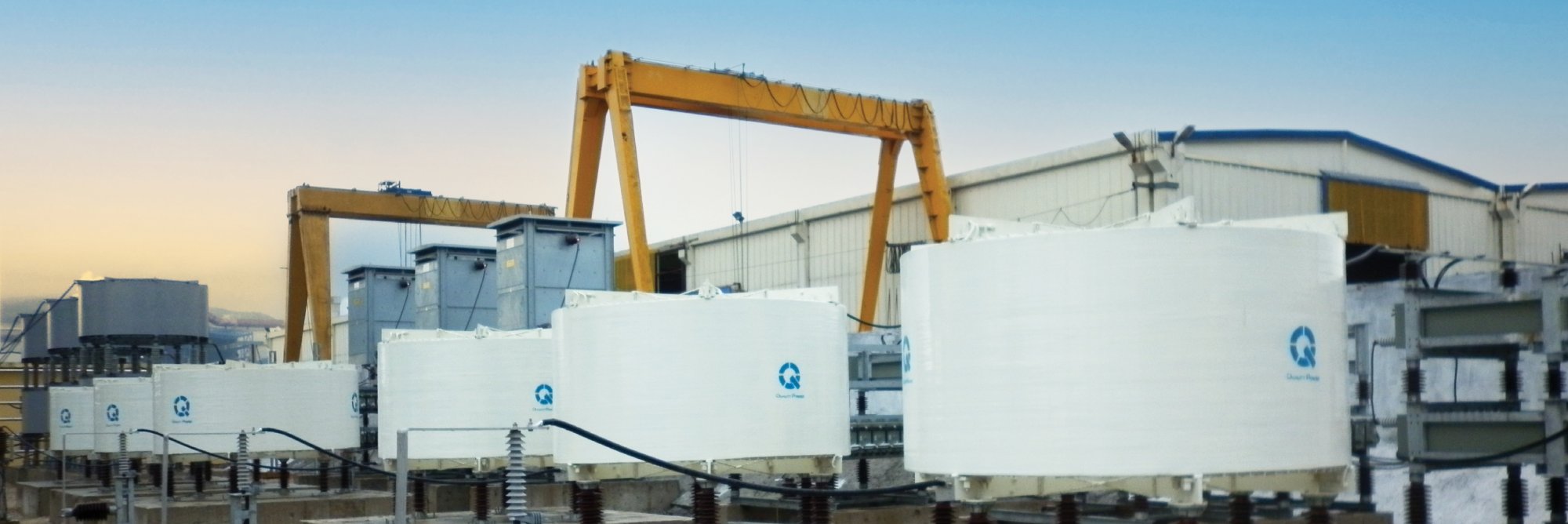A harmonic filter is a crucial component in electrical systems designed to mitigate the adverse effects of harmonics. Harmonics are unwanted frequencies superimposed on the fundamental frequency (typically 50 or 60 Hz) of the power system, generated by non-linear loads such as variable frequency drives, rectifiers, inverters, and other power electronic devices. These harmonics can cause various issues, including overheating, increased losses, equipment malfunctions, and interference with communication systems.

Harmonic
filters
Understanding Harmonics
Harmonics Defined: Harmonics are voltage or current waveforms that operate at frequencies that are integer multiples of the fundamental frequency. For example, if the fundamental frequency is 50 Hz, the second harmonic will be at 100 Hz, the third at 150 Hz, and so on.
Sources of Harmonics:
Variable Frequency Drives (VFDs):
Used to control the speed and torque of electric motors, VFDs create harmonics due to their switching action.
Rectifiers:
Convert AC to DC power, often found in power supplies and battery chargers, generating significant harmonic content.
Inverters:
Convert DC back to AC power, typically in renewable energy systems like solar and wind power, also produce harmonics.
Other Power Electronic Devices:
Including UPS systems, computers, and other electronic devices that draw non-linear loads from the power supply.
Role of Harmonic Filters
Mitigation of Harmonics: Harmonic filters are designed to reduce or eliminate harmonics from the electrical system. They work by blocking or diverting the harmonic currents, allowing only the fundamental frequency current to pass through.
Types of Harmonic Filters:
Passive Harmonic Filters:
Constructed using inductors (L), capacitors (C), and sometimes resistors (R), these filters are tuned to specific harmonic frequencies. They are simple, reliable, and cost-effective but have fixed tuning and can sometimes cause resonance issues.
Active Harmonic Filters:
These filters use power electronics to dynamically inject compensating currents that cancel out the harmonic currents. They are adaptable to varying loads and can compensate for multiple harmonics simultaneously. Active filters are more complex and expensive but highly effective.
Hybrid Harmonic Filters:
Combining both passive and active components, hybrid filters offer a balance between cost and performance, providing effective harmonic mitigation over a broader range of frequencies.
Passive Harmonic Filters Based on Connection to the Load
Series Filter (Current Rejecter)
- Connection Type: Placed in series with the load.
- Component Configuration: Utilizes inductors and capacitors connected in parallel.
- Function: Acts as a current rejecter by providing high impedance to specific harmonic frequencies, preventing these frequencies from reaching the load.
- Harmonic Targeting: Specifically tuned to block certain harmful harmonic currents, effectively reducing their impact on sensitive equipment.
- Application Use: Ideal for protecting specific critical equipment from certain types of harmonic distortion.
- Performance: Effective at isolating the load from targeted harmonics without impacting the main power supply’s fundamental frequency.
Parallel Filter (Current Acceptor)
- Connection Type: Installed parallel to the load.
- Component Configuration: Comprises inductors and capacitors arranged in series within the filter circuit.
- Function: Acts as a current acceptor by providing a low impedance path at specific harmonic frequencies, drawing these harmonic currents away from the load.
- Harmonic Targeting: Can be designed to mitigate a wide range of harmonic frequencies by shunting them through the filter.
- Application Use: Suitable for broader applications, such as in facilities with multiple non-linear loads (e.g., drives, converters) that generate diverse harmonics.
- Performance: Reduces the total harmonic distortion in the system, thereby improving overall power quality and protecting equipment from harmonic damage.
Passive Harmonic Filters Based on Component Types:
Band-pass Filter
Components and Functionality:
- Capacitor and Resistor: The basic structure of a band-pass filter in the context of harmonic filtering usually involves both capacitors and inductors (or reactors), although a simple RC (Resistor-Capacitor) circuit might be referred to in other electronic contexts. For harmonic filtering, the combination typically forms an LC circuit tuned to allow frequencies within a certain range to pass while blocking those outside the range.
- Applications: These filters are effective in targeting specific harmonic orders. They are tuned to a narrow frequency band centered around the problematic harmonics, which could be prevalent in industries where certain drives or equipment generate specific harmonic frequencies.
High-pass Filter
Components and Functionality:
- Resistor and Reactor (Inductor): A High-pass filter typically consists of a reactor connected in series with the line and a resistor connected in parallel to the reactor. This setup allows frequencies higher than a certain threshold to pass while blocking lower frequencies, reducing the overall quality factor (Q) of the filter, thereby making it less susceptible to resonances at unintended frequencies.
- Applications: This filter is suitable for applications with a broad range of harmonic frequencies, particularly effective in environments with high-frequency noise or where there is a need to protect sensitive equipment from high-frequency interference.
Combination of High-pass and Band-pass Filters
Functionality and Applications:
- Complementary Filtering: Using a high-pass filter in combination with a band-pass filter can address a wider spectrum of harmonic issues. The high-pass filter tackles the higher frequencies, while the band-pass filter can be tuned to manage specific troublesome harmonics. This approach is beneficial in medium to high voltage applications where diverse harmonic distortions need to be managed.
- Versatile Application: Such configurations are particularly useful in power systems where both specific and broad-spectrum harmonic mitigation is necessary, such as in sub transmission networks with diverse loads and generation profiles.
C-type Filter
Components and Functionality:
- Complex Configuration: A C-type filter is a more complex variant of the high-pass filter that includes additional components like capacitors and possibly more than one inductor or reactor, configured to provide both harmonic filtering and reactive power compensation.
- Applications: This filter type is particularly suited for complex and fluctuating loads such as those presented by cycloconverters and electric arc furnaces. The design helps to prevent the issues associated with parallel resonance and provides necessary reactive power, which is crucial in maintaining voltage stability and improving power factor in industrial applications.
Active Harmonic Filter: Configuration Based on Load
Single-phase Loads:
- AHFs for single-phase loads are designed to address harmonics generated by loads such as computers, office equipment, and residential appliances.
- Installation: Often installed at the point of use or in a centralized panel to filter harmonics at the source.
Three-phase Loads:
- AHFs for three-phase loads target industrial and commercial applications with equipment like VFDs, large motors, and HVAC systems.
- Installation: Typically installed at the distribution panel or main service entrance to filter harmonics from multiple sources.
Mixed Loads:
- Systems with a combination of single-phase and three-phase loads require AHFs that can handle diverse harmonic profiles.
- Installation: A strategic placement that covers both types of loads, often at the distribution level to provide comprehensive filtering.
Connection Configurations
Shunt Connection:
- AHFs are connected in parallel with the load.
- This configuration allows the filter to inject compensating currents to cancel out the harmonics without directly interfering with the main load current.
Series Connection:
- Less common for AHFs due to complexity and cost, but some specialized applications may use series connections.
- Series-connected filters can provide direct control over the current flowing to the load, offering precise harmonic mitigation.
Adaptation to Load Dynamics
Dynamic Loads:
- AHFs for dynamic loads (e.g., elevators, cranes) must quickly adapt to changing harmonic profiles.
- Features: Fast response times, real-time monitoring, and adaptive filtering algorithms.
Steady Loads:
- AHFs for steady loads (e.g., lighting, constant-speed motors) are optimized for consistent harmonic mitigation.
- Features: Stable performance, long-term reliability, and efficient operation.


